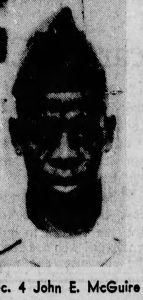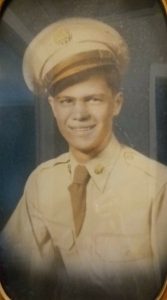Vernon Lowell Selvester, age 23, from Mississippi, Warren county.
Parents: Mrs. Garnet Lewis
Service era: Korea
Date of death: Thursday, November 2, 1950
Death details: During the last week of October 1950, Republic of Korea (ROK) Army forces under the control of the U.S. Eighth Army were advancing deep in North Korean territory, approaching the Yalu River on the Chinese-Korean border. Chinese Communist Forces (CCF) struck back in a surprise attack, engaging the ROK 1st and 6th Divisions near Unsan, some sixty miles north of Pyongyang. The U.S. 1st Cavalry Division, with the 8th Cavalry Regiment in the lead, was rushed forward to reinforce the ROK units in the Unsan area. On November 1, the regiment’s 1st Battalion took up positions north of Unsan, while the 2nd Battalion moved to guard the Nammyon River valley west of town, and the 3rd Battalion was placed in reserve at the valley’s southern end. Private First Class Vernon Lowell Selvester joined the U.S. Army from Mississippi and was a member of Company K of the 3rd Battalion, 8th Cavalry Regiment, 1st Cavalry Division. On November 2, 1950, Company K was in defensive positions with the 3rd Battalion near Unsan when the 8th Cavalry Regiment was cut off from its allies during a CCF surprise attack and, despite fierce resistance, were forced to withdraw. It was during this time that PFC Selvester went missing, though circumstances surrounding his loss are unknown. His name was not reported as a prisoner of war nor was he identified among the remains returned to U.S. custody after the ceasefire. Today, Private First Class Selvester is memorialized on the Courts of the Missing at the National Memorial Cemetery of the Pacific.
Source: National Archives, Defense POW/MIA Accounting Agency, Panama City News Herald (1954)


